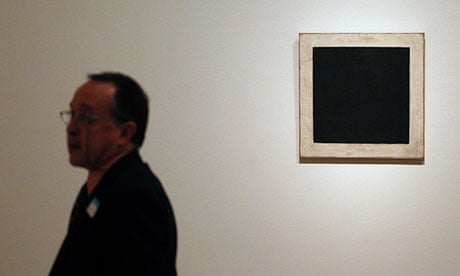The disappearance of the grave of the abstract artist Kasimir Malevich is an allegory of the violent history of modern Russia. Malevich, who was born in 1879, was buried in 1935 near an oak tree on the edge of Moscow. As the Soviet Union went through collective farming, forced industrialisation, war and cold war, his rustic grave was forgotten. The marker vanished, and so did the oak tree.
Now Malevich's resting place has been rediscovered during the building of flats in the Moscow suburb, Nemchinovka, where he was interred. A plaque is going to be put up and a local school will be named after him.
The disappearance and long-delayed recognition of Malevich's grave is a suitably strange and uneasy fate for the man who painted the most uncanny artwork of the 20th century.
If black is the colour of death, Malevich painted modern art's most morbid vision: his Black Square is, as its title may suggest, a solid square of blackness painted within a white border on a square canvas. Malevich painted the original Black Square in 1915 and it still survives, though cracked and decayed and with white peeping through the splintering darkness. With this piece, Malevich intended to paint "the face of the new art". The Black Square is one of modern art's most extreme statements, a reduction of art to an absolute zero from which a new art will be born. We can't help looking at it with the knowledge that Russia was on the verge of revolution when this eerie object was created. It is an image full of foreboding and menace, as if something mighty is about to happen – as if world is about to end.
It turned out that world after world would end in 20th-century Russia. It is curiously poignant that Malevich, who tried to persuade the Soviet Union to adopt his apocalyptic "suprematist" style as an official art, was so brutally erased after his death. His fate seems to be prophesied by his most famous painting.
The black square looks back bleakly at life. It seems to suck out energy and create an uncanny stillness. In Dostoevsky's novel The Idiot, a character gazes at Hans Holbein's painting The Dead Christ and comments that it could destroy someone's religious faith. Malevich painted an icon of emptiness that can destroy your faith in history, progress, art.
He certainly deserves his memorial, but perhaps naming a school after him is a bit hard on Moscow kids.




Comments (…)
Sign in or create your Guardian account to join the discussion